+Search query
-Structure paper
| Title | Structure of the active G-coupled human lysophosphatidic acid receptor 1 complexed with a potent agonist. |
|---|---|
| Journal, issue, pages | Nat Commun, Vol. 13, Issue 1, Page 5417, Year 2022 |
| Publish date | Sep 15, 2022 |
 Authors Authors | Hiroaki Akasaka / Tatsuki Tanaka / Fumiya K Sano / Yuma Matsuzaki / Wataru Shihoya / Osamu Nureki /  |
| PubMed Abstract | Lysophosphatidic acid receptor 1 (LPA) is one of the six G protein-coupled receptors activated by the bioactive lipid, lysophosphatidic acid (LPA). LPA is a drug target for various diseases, ...Lysophosphatidic acid receptor 1 (LPA) is one of the six G protein-coupled receptors activated by the bioactive lipid, lysophosphatidic acid (LPA). LPA is a drug target for various diseases, including cancer, inflammation, and neuropathic pain. Notably, LPA agonists have potential therapeutic value for obesity and urinary incontinence. Here, we report a cryo-electron microscopy structure of the active human LPA-G complex bound to ONO-0740556, an LPA analog with more potent activity against LPA. Our structure elucidated the details of the agonist binding mode and receptor activation mechanism mediated by rearrangements of transmembrane segment 7 and the central hydrophobic core. A structural comparison of LPA and other phylogenetically-related lipid-sensing GPCRs identified the structural determinants for lipid preference of LPA. Moreover, we characterized the structural polymorphisms at the receptor-G-protein interface, which potentially reflect the G-protein dissociation process. Our study provides insights into the detailed mechanism of LPA binding to agonists and paves the way toward the design of drug-like agonists targeting LPA. |
 External links External links |  Nat Commun / Nat Commun /  PubMed:36109516 / PubMed:36109516 /  PubMed Central PubMed Central |
| Methods | EM (single particle) |
| Resolution | 3.5 - 5.6 Å |
| Structure data | EMDB-34097, PDB-7yu3: EMDB-34098, PDB-7yu4: EMDB-34099, PDB-7yu5: EMDB-34100, PDB-7yu6: EMDB-34101, PDB-7yu7: EMDB-34102, PDB-7yu8: |
| Chemicals | 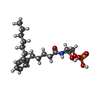 ChemComp-K6L: |
| Source |
|
 Keywords Keywords | MEMBRANE PROTEIN / GPCR |
 Movie
Movie Controller
Controller Structure viewers
Structure viewers About Yorodumi Papers
About Yorodumi Papers




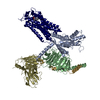

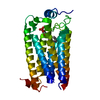

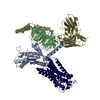

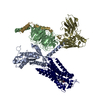

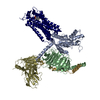

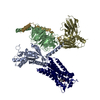

 homo sapiens (human)
homo sapiens (human)